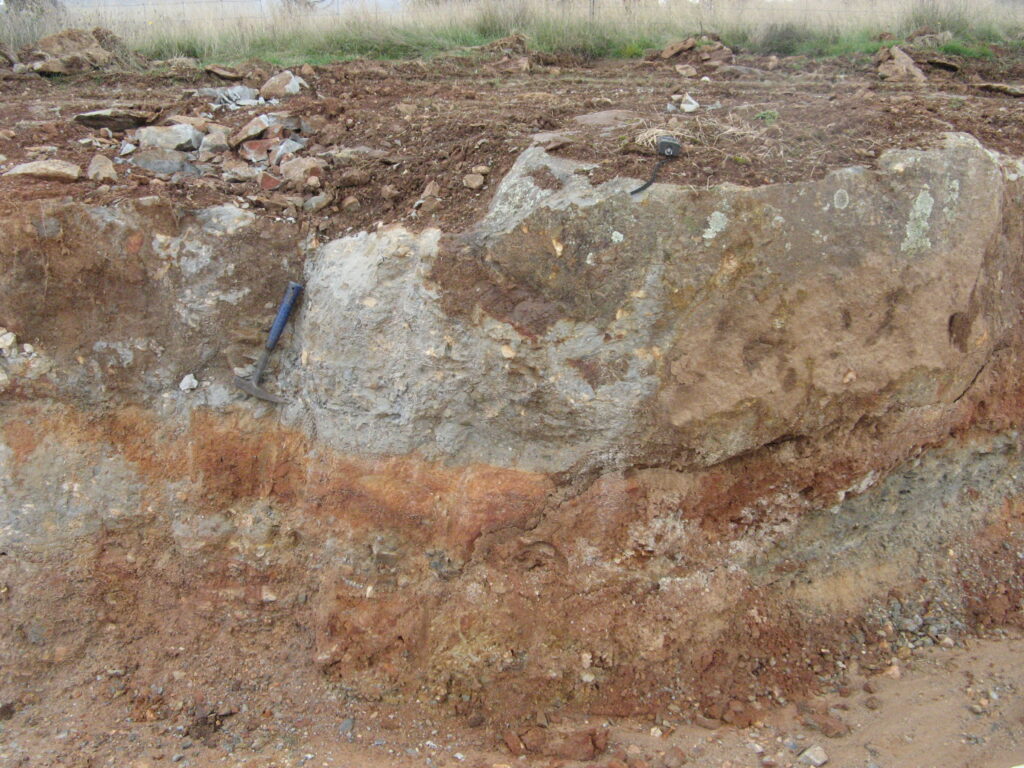
Ken McQueen, National Rock Garden Steering Committee
Extract from National Rock Garden Newsletter No. 23, May 2022
The Snowy Monaro Regional Council is currently upgrading and sealing the Bobeyan Road from near Adaminaby to Shannons Flat and the ACT border. Recent construction work in several cuttings has exposed Cenozoic clays and gravels, which are probably part of an old paleolake known as Lake Adaminaby. This ancient lake formed by damming of the upper part of the Murrumbidgee River at about 20–25 million years ago. Subsequently it dried out and was partially eroded as the landscape continued to evolve. Interestingly, one of the cuttings also contains large blocks of silcrete (silicified gravels), which can be seen embedded in-situ within the sediments. These blocks also show surrounding zones of partial silicification providing evidence of how the silcrete formed by a process of progressive introduction of silica-rich fluids (i.e. containing dissolved silica), either from groundwater or the old lake waters and sediments.

A group of interested earth scientists met with Arthur Wilkinson, the Chief Engineer in charge of the project, to discuss the possibility of obtaining a large block of the silcrete for display in the National Rock Garden and also to preserve sections of the cutting for further scientific study and as an educational site.



